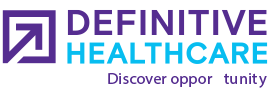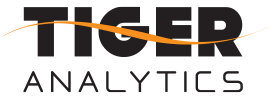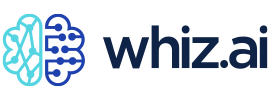|
THURSDAY, OCTOBER 27, 2022 |
|
|---|---|
|
07:30 AM - 08:30 AM |
Breakfast |
|
08:30 AM - 08:45 AM |
Open & Welcome |
|
08:45 AM - 09:30 AM |
Oncology Market Dynamics and Forecasting “Patient line of therapy” is a central concept in oncology forecasting. Brands often get initial FDA approval in later lines of therapy before they make their way up to earlier ones upon even further approval. The addressable patient population for a brand depends on the size of the patient pools in lines it is approved for. These, in turn, are a function of how long patients stay on competing brands in the different lines. As a successful brand that stabilizes patients for longer than competing brands advances from one line to an earlier one, it tends to shrink the patient pools of the lines it was only until then approved for. Traditional patient-based models make assumptions on the growing and shrinking lines, and on the shares the focus brand can assume, in each, in order to develop the focus forecast. But these models cannot in and of themselves predict the changes in patient pools, nor can they adequately describe the evolution of brands in the market. In this talk, we discuss a couple of approaches used to forecast oncology brands and markets that comprehensively forecast lines of therapy, rather than use them as assumptions in models geared towards one-brand forecasts. Speaker: Razek Karnoub, Director, Axtria |
|
09:30 AM - 10:15 AM |
Improving Forecast Accuracy Using Probabilistic Simulation for Oncology Therapies A patient-based demand forecast for an oncology and rare disease product involves range of input variables organized in a funnel approach to build forecast. However, given precise indications and rare patient populations in these markets, estimating precise values for critical input variables is difficult. Secondary data or research may provide a good starting point but lacks robustness. Further these inputs are very sensitive, a small deviation in inputs drive significant deviation on forecast. It is critical for forecasters to have a solid understanding of which variables are more sensitive than others, in order to bring more realism to the forecast and its drivers (or for that matter drivers of deviation of forecast). We developed stochastic simulations to calibrate forecast, estimate variance linked to inputs and generate scenarios around these inputs to create range-based forecast. This helps forecasting team answer leadership questions on drivers of deviation, evaluate scenarios based on confidence in inputs and articulate impact on forecast. This robust approach helped forecasters reduce time spent on calibrating models and reduce error in forecast. In the presentation we plan:
Speakers: Anshuman Verma, Head of Access Analytics & Forecasting, Takeda Oncology; Arun Jain, Principal, ZS Associates; Arindam Ganguly, Senior Consultant (Forecasting), ZS Associates |
|
10:15 AM - 10:45 AM |
Break |
|
10:45 AM - 11:30 AM |
According to the American Cancer Society, breast cancer (BC) is the most common cancer in women after skin cancer in the US. Every year, BC contributes to ~30% of all new female cancers. Invasive BC is categorized into 4 clinical stages: stages I, II, and III (non-metastatic) and stage IV (metastatic). Electronic health records gather ‘real-world’ longitudinal information concerning health resource utilization such as in-patient hospitalizations, outpatient care, procedures, and, often, drug prescriptions and vital statistics. These databases are increasingly being used in oncology for epidemiological evaluation, population outcome research, drug utilization reviews, evaluation of health service delivery and quality as well as health policy development. The lack of cancer stage data in these databases remains a major limiting factor in maximizing their utility for retrospective, outcomes-based research in cancer patients. In particular, the cancer stage is a crucial predictor of disease outcome and a key factor in determining the appropriateness of treatment. Thus, there is a need for an algorithm to predict the stage of BC patients in electronic health records. This session will discuss a machine learning-based model (based on a combination of multiple direct and indirect clinicopathological variables) that segregates BC patients into different stages. Speaker: Vikash Verma, Associate Director, HEOR & Commercial Analytics, Optum Life Sciences (part of UnitedHealth Group) Risk Stratification for Acute Exacerbation of Asthma: An Analysis of All Payor Claims Data Asthma presents a large burden to the US healthcare system, with an estimated prevalence of 26 million and an annual health expenditure of approximately $50 billion. Using 2017 - 2022 YTD Veeva Compass longitudinal medical and pharmacy claims data that capture beneficiaries across all payors, we investigated (1) the landscape of asthma in the US, (2) COVID-19-related trends, and (3) which risk factors predict asthma exacerbations across all provider settings. Within the analysis period, there were 14.6 million exacerbations, with ~43% of patients having more than one detected episode. Despite a consistent volume of asthma patients, the number of exacerbations fell dramatically during COVID-19 but is slowly rebounding to pre-pandemic levels. The predictive analysis comprised of a 2-year observation (baseline) period for risk features and a 1-year outcomes (follow-up) period. To identify predictors of acute exacerbations, we analyzed these data using both logistic regression and proportional hazards regression models across different settings. Significant predictors included various comorbidities (e.g., allergic rhinitis, obesity, GERD), asthma severity level, and socioeconomic factors. The ability to model risk within this population will identify and quantify unmet needs and can be an important part of the process for identifying the right patient sub-groups for drug development. Speakers: Patryk Skowron, PhD, Data Scientist, Veeva Systems - Analytics; Andres Quintero, MD, MPH, MBA, Global Medical Affairs Director, Glucocorticoid Portfolio Lead, Pfize |
|
11:30 AM - 12:15 PM |
Resource Allocation and Investment Optimization The push towards HCP omni-channel non-personal promotions (NPP) often comes with pressure from leadership for more efficient campaigns. This leads to a common problem during brand planning: how to optimize allocation of the brand’s total NPP budget across multiple channels/tactics. Because these tactics are direct-to-physician, optimal channel spend allocation is ideally performed simultaneously as optimal spend allocation across HCP segments. In this presentation, we will present an approach for resource allocation and investment optimization. The approach will help brand leads answer the following questions:
We will also share an approach for calculating incremental revenue calculations. An anonymized real-life example will be provided. We will demonstrate how to use this approach to perform scenario-planning – conduct “what-if” analyses under varying inputs and assumptions during this presentation. The example will include data from the HCP database (NPP exposure and engagement data, prescribing data) as well as Rx lift results from prior studies. We will provide tips for tweaking inputs in the scenario-planning process and show the resulting output. Speakers: John Lin, Senior Vice President, Practice Lead, Epsilon Data Management, Inc. A Publicis Groupe Company; Eleanor Tipa, PhD, Senior Vice President, Epsilon Data Management, Inc., A Publicis Groupe Company |
|
12:15 PM - 01:15 PM |
Lunch |
|
01:15 PM - 02:00 PM |
Unlocking Forward-looking Insight When Case Reporting Is Weak: Two Applied Case Studies Assessing infectious disease risk has critical importance for organizations, governments, and the general public. Case forecasting methods are often utilized to evaluate the course of disease and estimate the associated risk. However, these methods are frequently constrained by data limitations and methodological challenges that reduce their accuracy, generalizability, and utility. Specifically, making reliable predictions and forecasts requires accurate case data which are often unavailable due to several factors such as the lack of robust surveillance programs and emergence of novel diseases. Market sizing, risk assessments and other critical activities are constrained by these limitations. In this podium presentation, BlueDot will provide a walkthrough of two approaches to resolve the challenges associated with the lack of high-quality case data. Through two case studies, attendees can expect to learn scalable methods including our disease-agnostic framework that can be used to estimate the true case activity when there is known underreporting from official sources, and how BlueDot estimates the future risk of disease transmission in the absence of case data. Our approaches are designed to help decision-makers anticipate risks and accurately forecast when case data is unavailable or unreliable, thereby allowing them to confidently access new markets and effectively inform resource allocation. Speaker: Lauren McKenzie, Data Analyst, BlueDot Efficient and Generalizable Model for Clinical Trial Cohort Selection/a> Clinical trials are the most risky and expensive part of the drug development process. The difficulties in identifying and recruiting volunteer patients is a key obstacle responsible for many of the failures. Since most of the patient qualifications reside in unstructured text, Natural Language Processing (NLP) holds enormous promise for accelerating this process. The current attempts to automate cohort selection are still laborious and incomplete. Recently developed AI methods are heavily dependent on manual text annotations and are ungeneralizable. We propose an AI model that fully leverages the most advanced neural NLP, but emphasizes highly efficient medical vocabulary expansion to do concept extraction. Furthermore, we solve the relation extraction problem with best of breed semi-supervised learning which uses soft rules to eliminate manual annotations. Our results show an acceleration of 3 orders of magnitude compared to having a medically trained personnel read through the same clinical notes. Speakers: Bruce Ho, PhD, Chief Data Scientist, BigRio; Rohit Mahajan, Managing Partner and CEO, BigRio |
|
02:00 PM - 02:45 PM |
Accurate estimation of a condition population size is an important component of reliable forecasting of brand utilization. For selected diseases, especially rare conditions, this can be a difficult task, and often resulting in biased and unreliable population estimates. One way of supporting the market sizing activity, as part of the forecasting efforts, is to leverage disease-based communities established to help understand the complexities and progression of the selected conditions. This podium presentation, as a result, will introduce the disease-based community concept, describe the process of selecting and engaging healthcare institutions and healthcare experts, review how these communities are governed, as well as track and report patient outcomes over time. The procedures of processing the data will be also summarized and key data elements reviewed. Applications of population size estimation based on the disease-based communities’ data will be also presented to showcase how the disease-based communities can provide the unbiased insights to reliable and aid the accurate population size estimation, and ultimately feeding in as inputs into reliable and accurate drug utilization forecasts. Overall, the audience will garner the knowledge of applications of the disease-based communities in enhancing industry’s ability to size the condition population and apply the insights in deriving reliable and accurate forecasting predictions. Speaker: Ewa J. Kleczyk, PhD, Senior Vice President, Analytics & Data Operations, Target RWE Leveraging Predictive Insights and AI-Powered Analytics to Improve Commercial Effectiveness Pharmaceutical companies have volumes of market data coming from numerous third-party providers, as well as internal sales force data. Instead of being overwhelmed by the deluge of data, commercial teams are now able to leverage AI-powered analytics to receive real-time and predictive insights to solve complex questions about brand performance. In this session, we will dive into brand commercial performance, uncover actionable insights to help increase its market share, and apply predictive analytics to HCP targeting, while also covering a series of high-level customer case studies showcasing the application of AI/ML in pharma, including NLP, segmentation analysis, and time-series analytics. We will traverse the entire analytics journey: data manipulation, ad-hoc exploration, uncover actionable insights to answer the WHY, and train ML models. The data presented will include both internal and external data, such as anonymized 3rd party prescription level data with sales activity around call planning and targeting. The audience will understand how AI-powered analytics applies to their business:
Speaker: Nick Pinero, Director, Analytics Solutions, Tellius |
|
02:45 PM - 03:15 PM |
Break |
|
03:15 PM - 04:00 PM |
Navigating the Complexity of Forecasting in the Oncology Market Unlike other therapeutic areas, oncology treatments and drugs require a unique forecasting approach due to the complexity of the disease. Since oncology treatments are designed to target a particular patient population (depending on the line of therapy, presence of biomarkers, or tumor types), forecasting models should factor in every critical element, such as patient identification, the likelihood of treatment switching and discontinuation, and time of therapy for different patients. However, it is not always easy to develop detailed and accurate forecasts in this space, especially when the oncology environment is always evolving. There are operational challenges too. Robust oncology forecasting requires seamless collaboration across departments such as research and development, clinical intelligence, marketing, finance, and pricing. Here's where traditional offline forecasting methods can fail to capture and synchronize data at a global level, leading to forecasting operations carried out in silos across the organization. In this session, forecasting experts at Indegene highlight how pharmaceutical organizations can solve the above challenges and benefit from dynamic patient- and patient-flow-based models. This can be achieved by leveraging detailed research outcomes from clinical studies (including data related to disease progression, clinical outcomes to track progression, clinical attributes for share analysis, etc). We also share strategic insights into what it takes to set up a global forecasting infrastructure that is equipped to handle multiple forecasting stakeholders across geographies and functions. Speakers: Shri Amrute, Director of Commercial Analytics, Indegene; Steven White, Forecasting Practice Lead, Research, Analytics and Insights , Indegene |
|
04:00 PM - 04:45 PM |
Using Conversational Analytics and Data to Simplify the Forecasting Process for Clinical Trials This session will discuss how BMS is planning to leverage the power of AI, specifically conversational AI, to empower decision makers and data scientists, accelerating their discovery & development, enabling faster time to insight, and providing the right information at the right times. Speakers: Nirav Shah, Director, Real World Advanced Analytics & Data Science, BMS; Rahul Karkhanis, Commercial Analytics SME, WhizAI |
|
06:30 PM - 09:00 PM |
Reception |
|
FRIDAY, OCTOBER 28, 2022 |
|
|---|---|
|
07:30 AM - 08:30 AM |
Breakfast |
|
08:30 AM - 09:15 AM |
Panel Discussion: Confessions of a Forecasting Capability Lead - The Art and Science of Opportunity Assessment Speakers: Mayank Misra, VP, Head of Business Insights & Analytics, US Oncology, Takeda Pharmaceuticals; Jerry Rosenblatt, Managing Partner, Foster Rosenblatt; Parijat Sharma, Principal, ZS Associates; Aayush Tandon, Director Head - US Forecasting, Novartis |
|
09:15 AM - 10:00 AM |
Data Curation: What You Need to Know to Shine Ideally, this is how things should work. We ponder the business question, identify the relevant dataset, analyze the data, spell out findings, and generate recommendations. Since the data is an accurate portrayal of the phenomenon it is meant to capture, the findings and recommendations can only be in the money, right? In theory, yes. In practice, the data is far from perfect and, in some cases, the data is so inaccurate that assuming it is a truthful depiction of what’s going on may lead us to say things and provide recommendations that we’ll come to regret later on. We have an eloquent example of this that we’ll cover in the introduction. It has to do with fact that only a small fraction of patients that have been exposed to chemo and radiation therapy (we’ll refer to them as CRT patients) are captured in the data as they fall under Medicare Part A which is known to be poorly represented in all Open Claims data sources. As a result, a straight read of the data will squarely suggest there is a dearth of CRT patients and if this is the eligibility criterion for a drug, then its prospects are very grim! The point here is that assuming that the data is perfect may truly backfire. Here are a few topics we’ll cover in this workshop. How do we know there is an issue with the data? If we are new to pharma, that may be daunting as we have no reference to compare what the data is saying against. When there is indeed an issue with the data, should we fix the bad records or ignore the problem? In certain cases, the best thing is to throw away the bad records. In other cases, especially when dealing with orphan drugs, we may not have the luxury of throwing anything away. The best strategy may be to attempt to salvage whatever we have. Under yet other circumstances, the best thing may be to do nothing and red flag the problem as a caveat. Then there is the practical question of fixing the data. In our opinion, SVD takes the cake and dwarfs techniques such as MICE or KNN. By the way, SVD was the winning algorithm in the Netflix $1 million competition in 2009 to predict the rating of a user for a movie on a scale of 1 to 5 where 5 is an excellent movie and 1 a bad one. We had the chance to deploy SVD in client projects and in the process come up with improvements to the SVD algorithm. We’ll close the workshop by articulating the top 10 takeaways when doing analysis. Speakers: Jean Patrick Tsang, PhD & MBA, Bayser; Erle Davis MS, PMP, VP, Client Solutions, OncoHealth |
|
10:00 AM - 10:15 AM |
Break |
|
10:15 AM - 11:00 AM |
Forecasting Uncertainty: Promotional and Market Access Drivers In life sciences, refining a product forecast with integrated promotional and market access coverage is now vital. Both factors significantly impact customer adoption and market share—and each represents a growing area of uncertainty, resulting in forecasters being challenged daily to judge their impact. Balancing the level of rigor across benchmarking, voice of customer and secondary data analyses is critical:
Flexible tools are required to leverage this feedback and continually tweak promotional and market access coverage assumptions–which impact market share and subsequently the forecast. Trinity’s presentation will cover tips, tricks and best practices on incorporating these two critical drivers of forecasts, including real world examples. Speakers: Susheel Sukhtankar, Partner and Head of Commercial Analytics, Trinity Life Sciences; Adrian Watson, Director, Trinity Life Sciences |
|
11:00 AM - 11:45 PM |
Use of Monte-Carlo Simulations in Forecasting In this presentation, the author uses two practical case studies, to empirically demonstrate the use of Monte-Carlo simulations in Forecasting. In both, use-cases the simulations were used to assist in Strategic Forecasting and decision-making. This is followed by The third use case explaining the approach to optimize the process of simulator creation using standard dynamic modules. In the First use-case, the objective is to determine ‘confidence’ in an existing Global forecast. The Monte-Carlo method is used to generate a range of outcomes, when contributing variables are tested probabilistically. This led to quantifying risk associated with the Long range forecast, it’s likelihood of success, and identify key attributes that impacts the revenue forecast. In the second use-case, the problem is to determine the suitability to launch a product in a specific market, given three different market scenarios relating to their Order-of entry. By using Monte-Carlo simulations, we make an emphatic recommendation, to launch the product in only one particular market scenario. Third use case: since most of the forecasting moving towards range forecasting from point forecasting, Objective is to build a genetic simulation modules which can be easily used to simulate the required parameter basis TAs, model type, scenarios, Market segments, events etc.. so process of creation of simulations becomes optimized and efficient. Speakers: Anuj Sharma, Assistant Vice President, Genpact; Amni Chandi, Manager, Forecasting, Genpact |
|
11:45 AM - 12:00 PM |
Close |










